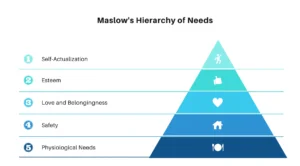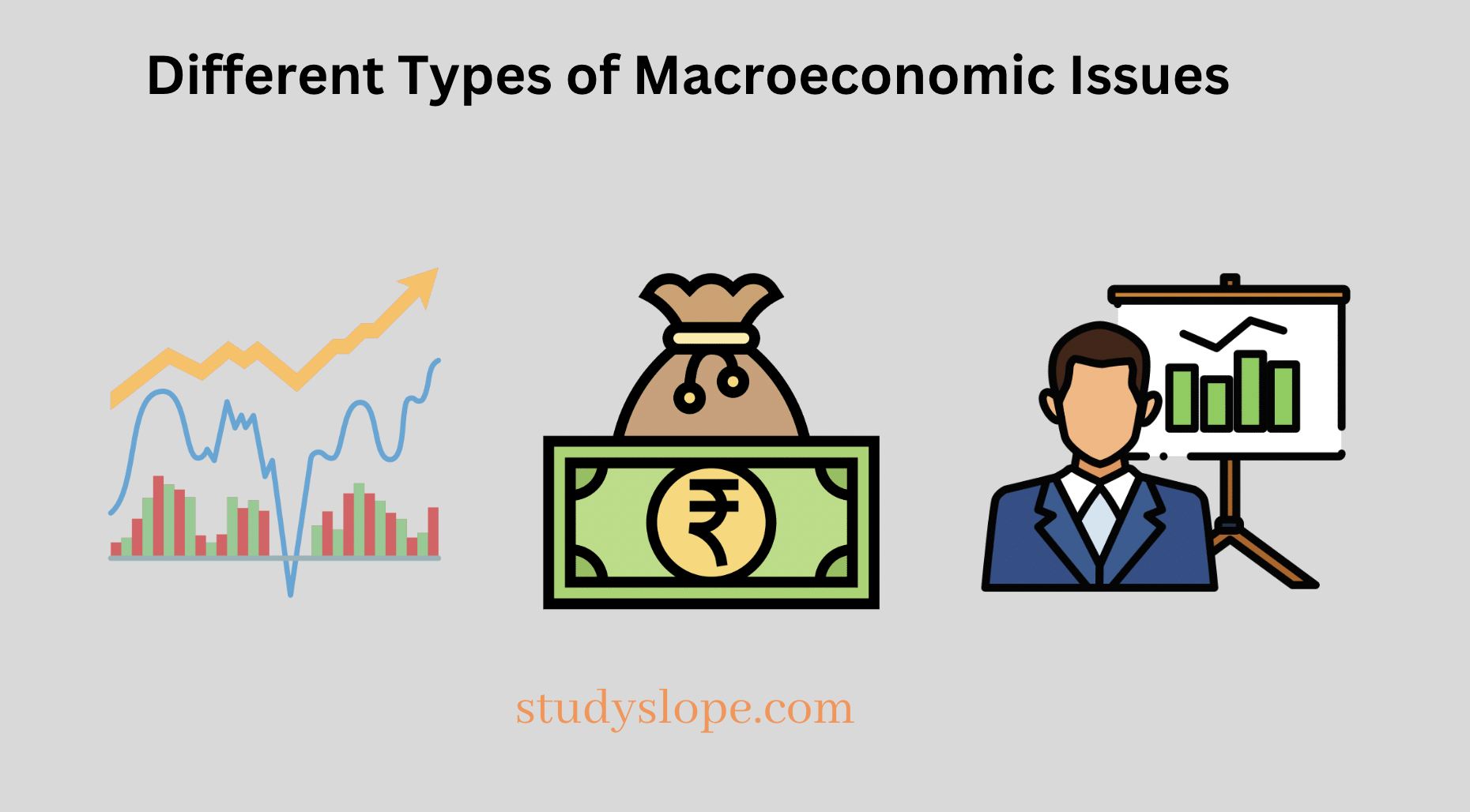Macroeconomic Issues
In economics, the study of aggregate economic variables such as aggregate demand, aggregate supply, price level, and so on is referred to as macroeconomics. This subfield of economics is known as the “macroeconomics branch.” The fundamental issues in macroeconomics are the types of economic challenges that have frequently been encountered by a variety of nations at an assortment of times and places.
It helps to provide a sound theoretical framework for investigating the causes and effects of the economic problem and provides effective guidelines for finding an appropriate policy that measures to solve the economic problem. Additionally, it contributes to the provision of a sound theoretical framework for the investigation of the causes and effects of the economic problem. Today we will be understanding some of the major types of Macroeconomic Issues.
Issues in Macroeconomic
The main macroeconomic issues are:
- Unemployment as a microeconomic issue
- Business cycles as a microeconomic issue
- Stagflation and deflation
- Economic growth
- The balance of payments and exchange rate
People Also view: Types of Economic Analysis
In this section we will be discussing about the main macroeconomic issues. Below are the 5 major macroeconomic issues:
Unemployment as a macroeconomic issue
Unemployment is a macroeconomic issues since it has a considerable impact on an economy’s overall health and stability. When unemployment is high, a number of undesirable outcomes can occur, including:
Reduced consumer expenditure: When people are out of work, they have less disposable income, which can contribute to lower consumer spending and demand for products and services.
Lower production levels: When there is less demand for goods and services, businesses may create less, resulting in fewer production levels and potentially lower earnings.
Lower income levels: Unemployment can lead to fewer income levels for people and households, which can lead to lower consumer spending and demand for products and services.
Social and political instability:
High unemployment can also lead to social and political instability when people grow frustrated and unsatisfied with the state of the economy and the government’s handling of the issue.
Business Cycles as macroeconomic issue
Business cycles are the cyclical changes in economic activity that an economy goes through. These variations may take the form of adjustments to economic indices like employment, GDP, and inflation. Because they can significantly affect an economy’s general health and stability, business cycles constitute as a macroeconomic issues.
Typically, business cycles go through four stages: expansion, peak, contraction, and trough. Economic activity often increases during an expansion, which results in higher levels of employment, production, and income. Increased consumer spending and economic expansion may result from this. Economic activity is at its maximum point during a business cycle at this period.
Following the peak, economic activity starts to slow down, which results in reduced levels of income, production, and employment. Consumer spending may decline as a result, slowing economic development. Economic activity reaches its lowest point at the bottom of a business cycle.
Stagflation and Deflation
Stagflation describes an economic environment characterised by both high inflation and unemployment. This can arise when there is a high demand for goods and services but a limited supply, resulting in higher pricing and fewer employment possibilities. Stagflation can be difficult to combat due to the fact that the conventional strategies for combating excessive inflation (such as increasing interest rates) can simultaneously increase unemployment.
A continuous decline in the general price level of goods and services in an economy is referred to as deflation. This can occur when poor demand for products and services causes prices to fall. Deflation may appear to be a favourable development for consumers, but it can be detrimental to an economy because it can lead to decreased consumer spending and lower output levels. This can subsequently result in more unemployment and slower economic growth. Thus Both stagflation and deflation can have Issues in Microeconomic.
Economic growth
Another Macroeconomic Issues Economic growth. Economic growth refers to an increase in the economy’s output of commodities and services. Gross domestic product (GDP), which represents the entire cost of all products and services produced in a nation during a given year, can be used to quantify this growth. Economic expansion is often regarded as a good thing because it can result in more jobs, higher earnings, and a higher standard of living for a nation’s population.
At the microeconomic level, businesses can support economic expansion by boosting output and expanding operations. This can entail spending money on new technology or hiring more people, both of which can boost output and economic growth.
However, there are drawbacks to economic expansion as well, including resource depletion, environmental damage, and income disparity. As a result, while making decisions on policy, decision-makers must take into account the trade-offs and potential effects of economic growth.
The balance of payments and exchange rate
The balance of payments is a comprehensive record of all economic transactions that took place in a given accounting year between the members of the home nation and the members of the other countries in the globe. The value of one currency compared to another is a significant factor, if not the deciding factor, in these transactions. It is the rate at which the money of one nation is exchanged for the economy of another nation (or gold).
In the past twenty years, a negative trend has been observed in the value of the rupee when measured against the United States dollar and the British pound, which are considered to be two of the most important currencies in use around the world. Economists are perpetually interested in determining the reasons for and the effects of societal shifts.
I hope you enjoy reading the article about different types of Macroeconomic Issues. if you like to read other articles please click the link below.
Related Posts
- 7 Best Tips on How To Get Financial Security?

- How To Check For Car Insurance in Australia: A Step-by-Step Guide

- Explain Delegation. What difficulties are encounted in delegation authority.

- Define motivation. Explain Maslow’s Needs Hierarchy Theory.

- Elucidate the nature and importance of communication. What are its various types?

